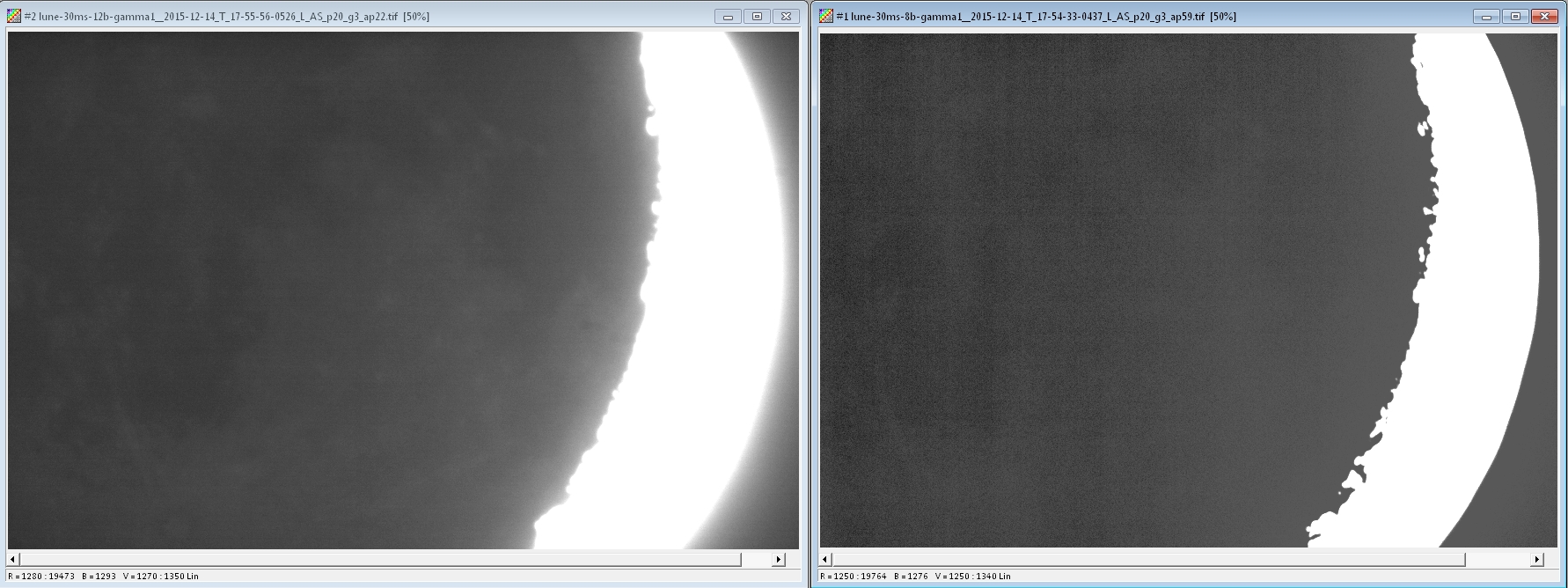Comparison between 8 bits and 12 bits acquisition with Basler 1920-155 camera
Update 17 December 2015
Acquisition set-up :
Telescope : Skywatcher 130 / 150 Maksutov at F/12, no filter
Basler 1950-155 :
Exposure = 30 ms (ie. max ADU = 80, ie. about 30% saturation of the sensor)
Gain = 1 (= minimum value for the camera) in order to maximize dynamic range of the camera (12.2 bits) and S/Nmax
8 bits or 12 bits acquisition (max speed = 155 fps in 8 bits and 77 fps in 12 bits)
Gamma = 1 or 0.5,
60 s long acquisition. 20% of images are stacked. The cumulated exposure time is the same for all images.
The photonic noise is the same on all images. The difference only comes from the quantification noise.
Clear sky, but very low moon (altitude from 12° to 10°, 18h UT, 14 december 2015). Strong turbulence.
12 bits acquisition (left) versus 8 bits acquisition (right) - Gamma = 1
=> 12 bits is clearly superior to 8 bits acquisition. This is due to digitization loss at low ADU in 8 bits mode.

8 bits acquisition : gamma = 0.5 (left) versus gamma = 1 (right)
=> In 8 bits acquisition, going from gamma = 1 to 0.5, largely improves the detection at low ADU.
This confirms that the gamma transformation is done in 12 bits in the electronic of the camera.

12 bits and gamma = 1 (left) versus 8 bits and gamma = 0.5 (right)
=> Going from gamma = 1 to 0.5 in 8 bits mode largely brings most of the faint details visible at low ADU in 12 bits acquisiton. Still 12 bits acquisition gives best results at low ADU.

12 bits acquisition (left) versus 8 bits acquisition (right) - Gamma = 0.5
=> With gamma = 0.5, results with 8 bits acquisition are close to 12 bits acquisition. Still 8 bits beeing is little bit more noisy at low ADU
=> Acquisition in 12 bits gives same results with gamma = 0.5 or 1..




